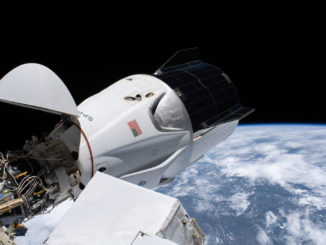SpaceX Launches X-37B Spaceplane to Test Advanced Technologies

A SpaceX Falcon 9 rocket successfully launched the X-37B Orbital Test Vehicle on August 21, 2025, marking a significant milestone for the United States Space Force (USSF). The launch occurred shortly before midnight from Launch Complex 39A at NASA’s Kennedy Space Center in Florida. This mission, designated USSF-36, represents the eighth flight of the X-37B program, which has been operational since April 2010.
Following liftoff at 23:50 EDT (03:50 UTC on August 22), the Falcon 9 rocket’s first stage booster, tail number 1092, completed a successful landing at Cape Canaveral Space Force Station approximately 8.5 minutes later. The landing produced a sonic boom, a reminder of the powerful technology behind the mission.
Mission Objectives and Innovations
The X-37B spaceplane is known for its secretive nature, with many details about its missions remaining classified. However, USSF officials highlighted two key demonstrations for this flight: advanced laser communication technology and quantum navigation capabilities.
The onboard laser communications system is designed to interact with “proliferated commercial satellite networks in Low Earth Orbit.” While it remains unclear which specific satellite systems will be involved—whether SpaceX’s own Starshield or Starlink satellites—this technology promises to enhance data transmission rates and security through shorter wavelength infrared light.
General Chance Saltzman, Chief of Space Operations, emphasized the importance of this demonstration, stating, “OTV-8’s laser communications demonstration will mark an important step in the U.S. Space Force’s ability to leverage proliferated space networks as part of a diversified and redundant space architecture.” He noted that this advancement will strengthen the resilience and reliability of satellite communications.
Quantum Navigation and Future Implications
The X-37B will also test a quantum inertial sensor that monitors atomic movement for navigation purposes. This technology aims to provide navigation solutions in environments where GPS signals are weak or unavailable, such as in cislunar space. Colonel Ramsey Horn, commander of Space Delta 9, described this capability as a “welcome step forward for operational resilience in space.”
While the exact duration of the X-37B’s mission in low Earth orbit remains unspecified, its objectives highlight the USSF’s ongoing commitment to explore and implement cutting-edge space technologies. The successful launch and operations of the X-37B will contribute greatly to future military and commercial endeavors in space.
As the mission progresses, the innovations being tested on the X-37B could play a crucial role in shaping the future of satellite communications and navigation, both for military operations and commercial applications. The advancements made through this program may redefine how space technology is utilized in the coming years, ensuring that the U.S. remains at the forefront of space exploration and security.






